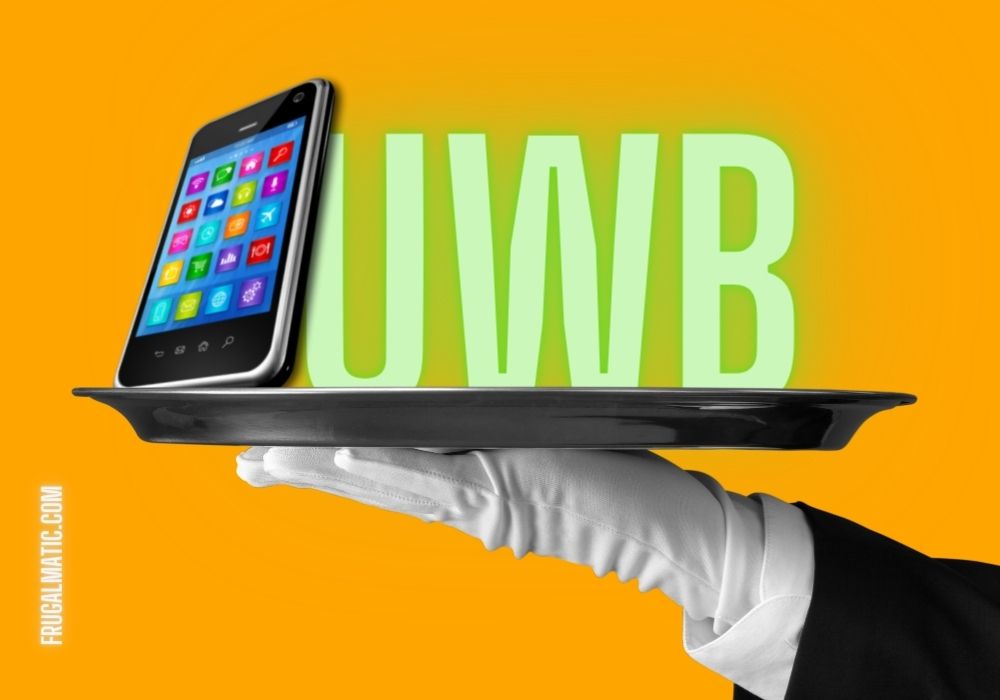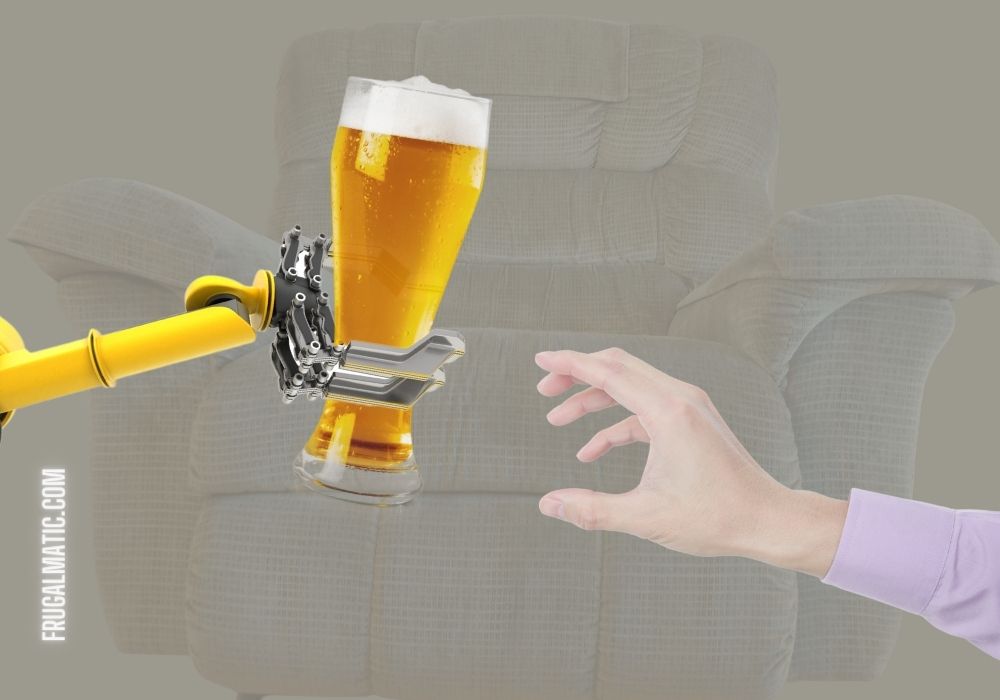This post was last updated on March 30th, 2022 at 03:08 pm
The world is looking more and more like the Jetsons, though not in a good way. The 2022 Consumer Electronics Show in Las Vegas offers a glimpse into a future that promises to be more convenient but also more sedentary. Upcoming innovations will likely target some of the most physically active parts of our daily routines, perhaps even eliminating walks to the refrigerator. I call it “sedentary tech.”
A radio technology known as ultra-wideband, or UWB, could become the driving force of future sedentary tech. This powerful form of wireless communication goes beyond giving gadgets a sense of direction—it allows for spatial awareness.
UWB: the dark side of future tech?
To be sure, UWB will prove helpful in many cases. It could help you quickly find a misplaced device or enter buildings without having to swipe a key. Some speculate UWB could end the need for passwords, which I would cheer. But UWB could also eliminate movement from our day as UWB-directed gadgets prove capable of doing the moving for us.
UWB allows gadgets to communicate with each other and understand their position relative to each other. Wall Street Journal technology writer Christopher Mims put it this way in a Jan. 8 column: “It enables a centimeter-accurate sense of ‘where’ on top of the ‘when’ of computers’ clocks and the ‘what’ provided by cameras and other sensors, and it could lead to all sorts of interesting things that might not be immediately obvious.”
UWB chips are already in some devices, such as iPhones starting with the iPhone 11. It’s also in Google, Samsung, and other phones. At the moment, few UWB applications exist because our digital world lacks the UWB infrastructure. But be prepared for that to change.
After all, many innovations started out slowly. For example, Wi-Fi existed since the 1990s, and many years passed before its widespread adoption. As with so many technological advancements, UWB began as a military technology. It was once called pulse radio. Private companies are in the earliest stages of figuring out how to incorporate UWB into our everyday lives.

Next level sedentary tech: the robotic butler
It’s easy to see how UWB could accelerate the development of many technologies that have remained stuck in the realm of science fiction, such as robotic butlers. To date, we haven’t had anything like Rosie from the Jetsons. While exciting in theory, robotic butlers haven’t proven practical yet. It still makes more sense for us to walk to the fridge than it does to ask a robot to do it for us.
But the 2022 Consumer Electronics Show (CES) suggests we might not be too far off from a version of Rosie. The Retriever by Labrador Systems Inc. can be a roaming mini-fridge, delivering you drinks or food. The company promotes it as a way to help people with disabilities live more independently, which of course is admirable. The early adopters will seek it out because they struggle with a disability. They’ll be willing to pay the higher price tag.
Read: Robotic lawnmowers to cut this physical activity
As this technology advances and the price drops, robotic butlers could become part of the average household, delivering beers to Average Joes everywhere watching football from the couch. It would be similar to the robotic vacuum cleaner, which maybe also started off as tech to make life easier for people with disabilities. Nowadays, many people without disabilities use robotic vacuums. As the price has dropped, they’ve entered more households.
The result of the robotic butler could be to eliminate hundreds, perhaps of thousands, of steps from people’s daily routines. Given that many people don’t come close to daily recommended step counts, between 7,000 and 10,000 steps, people can ill-afford to lose what few steps they do get.
Lost in all the iRobot talk is the fact that everyday activities, such as vacuuming and sweeping, can help people stay physically active. Physical activity other than exercise offers a surprising amount of health benefits.
The best robotic vacuum yet?
The next household chore to fall is probably mopping. The 2022 CES featured the Roborock S7 MaxV Ultra. Unlike other brands and models featuring mop attachments, the Roborock can transition from floor to carpet without any problems, according to one reviewer.
“It does double duty as a vacuum and mop, and unlike most vacuums which struggle with mop usability, this one actually retracts the mop up into the chassis when it encounters a rug, allowing it to mop and vacuum at the same time without any traditional compromises,” writes Dave Johnson of Forbes
While technologies such as the robotic vacuum cleaner can replace physical activity, other types of technologies promote inactivity. This tech makes it difficult to get out of your chair. In recent years, one of the biggest contributors to physical inactivity is the smartphone. Years ago, the bad guy was TV and radio before that. With each innovation, we’re becoming more inactive.
No escaping screens in the sedentary future
Up next: Glasses for experiencing virtual/augmented reality, more recently referred to as the “metaverse.” The 2022 CES featured headsets and glasses that are less clunky and annoying to wear than their predecessors, according to reviews. One product wowing some techies is the TCL NXTWEAR Air display glasses.
“Viewing movies on the TCL NXTWEAR AIR creates a blockbuster viewing experience. A nail-biting sporting event turns a dull journey to the office into a thrilling ride, while an epic adventure film makes a long-haul flight go by in a flash,” the company states.
In the 1950s, most Americans could only afford a single TV set, usually located in the living room. By the 1980s, TVs started showing up in bedrooms and kitchens. Meanwhile, the screen sizes got bigger and bigger.
Today, the smartphone allows you to have a screen anywhere, but it’s a small one. The NXTWEAR Air glasses solves the small screen problem. With it, you can watch the equivalent of a 140-inch screen, according to the company. These glasses could take binge-watching to the next level—all the way through breakfast, lunch, and dinner.
Sedentary tech for the ‘deep immersion’ experience
I imagine these glasses or something similar also might be great for gaming, which can involve hours and hours of sitting. In fact, sitting is such a big part of the gaming experience that this year’s CES featured a gaming chair that vibrates, tilts, and lights up for a “deep immersion” experience.
And if that’s not enough to keep you in your chair, perhaps a virtual reality hot/cold simulator would do the trick. A Japan-based company, Shiftall, is working on a wearable that can generate a breeze up to 107 degrees or as cold as 48 degrees. Not only would it make games more realistic—perhaps the simulator could replace the outdoors altogether.
These innovations are only a taste of what’s to come as the metaverse takes shape. Moving into the second half of the 21st century, the metaverse represents the ultimate realization of the sedentary lifestyle. Fittingly, gamers will likely be the first to occupy the space, followed by the general public.

Endgame for sedentary tech: the metaverse
Facebook’s Mark Zuckerberger is touting the metaverse as a “virtual environment where you can be present with people in digital spaces.” He portrays the digital future as one of genuine connection, in response to accusations of Facebook feeding a culture of superficiality.
It remains to be seen whether the metaverse turns out to be anything more than hype. But let’s assume Zuckerberg is right, and the metaverse becomes everything he predicted and more. Imagine if the metaverse proved so successful that the only way to communicate with your co-workers, friends, and family was through it. Imagine if you couldn’t take off your headset/special glasses without becoming disconnected from the world.
It might feel a lot like losing your smartphone—but worse. At least at the level of our current technology, you can get a break from screens. You can actually look away from them once in a while.
A day in the life of the metaverse
But in the future, maybe not. Only through the metaverse could you carry out your day-to-day responsibilities. Your entire home might be connected to it. Through the metaverse, you’d signal to your robotic butler to deliver you lunch. Then you’d direct it to wash the dishes, followed by wiping down the kitchen counters and table. Finally, sweeping and mopping the floors.
As nighttime approached, you wouldn’t have to get up to turn on the lights. You would simply “wink” at a lamp through your special glasses. You wouldn’t have to get up to do much of anything, thanks in large part to all those UWB chips sprinkled throughout every room.
Read: How to form the physically active mindset
Sure, some people would still exercise and do physical activities, but nearly all movement would be strictly optional and unnecessary. And so, many people wouldn’t bother to move much. Except to go to the bathroom, though maybe that problem could be solved, too. (Don’t ask me how.)
With all this new sedentary tech, perhaps we’ll have the Jetsons beat. After all, the 2022 CES did include a flying car, the S11 by a company called Maca.

